The coastal artillery battery at Longues-sur-Mer is one of the key Normandy D-Day battlefield sites to visit, for a number of reasons – it’s in the midst of the landing beaches (between Omaha and Gold); it’s an open site, free to visit; and it still has its guns (very rare)!
History of the Longues-sur-Mer Battery
The battery, codename Wn48*, was built on the cliffs between Arromanches and Port en Bessin, in just a few months between Sep 1943 and Apr 1944.
It comprised four Czech-made (Skoda) 150mm naval guns in a line of casements**, a 120mm ex-Russian gun***, a command/fire control bunker 300m away on the cliff edge, and a number of other constructions such as trenches, ammunition stores, mortar pits, Tobruck machine gun positions, a searchlight installation and four 20mm AA gun positions… all within a ring of barbed wire & mines.
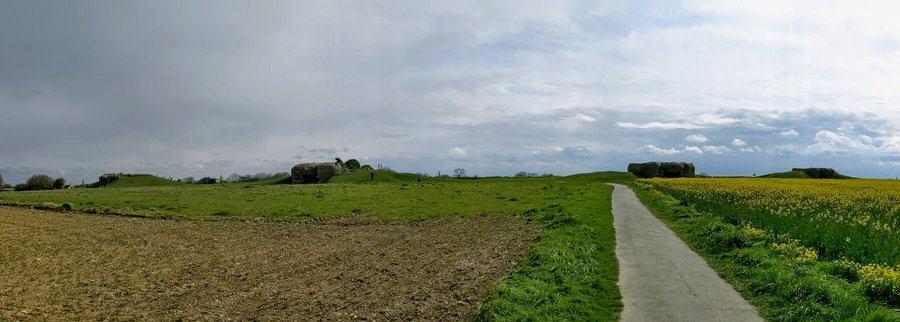
It was manned by a garrison of 180 troops, half of whom were over 40 years old.
The choice of location for the site is obvious when you visit. Its guns, which could fire a 45 kg shell up to 23 kms, had a field of fire that easily covered Omaha beach to the west and Gold beach, including Arromanches where the Allies later built the Mulberry B port, to the east.
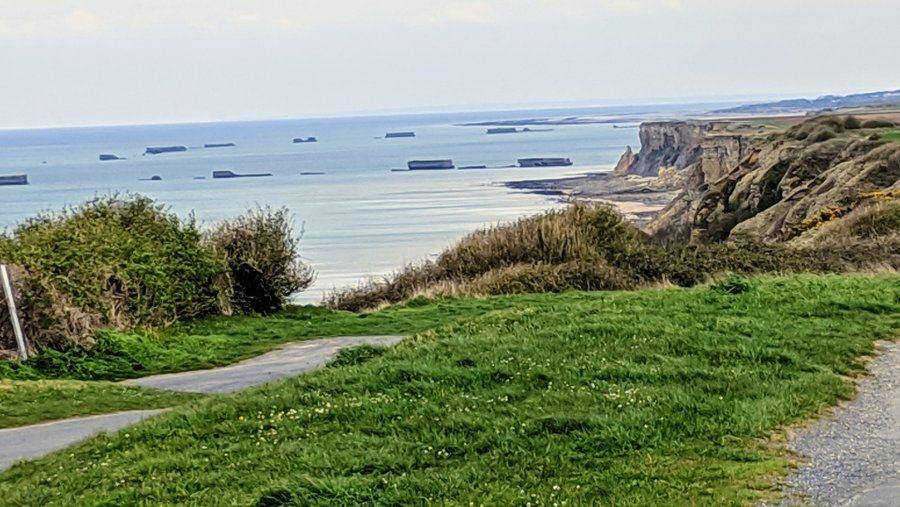
The Longues-sur-Mer Battery on D-Day
In the weeks leading up to D-Day the Longues-sur-Mer Battery was bombed, as were many of the installations of the Atlantik Wall. It was heavily bombed the night before D-Day, and even though some bombs came very close to the casements their deep concrete platform foundations prevented them from being seriously damaged. The bombs did sever the armoured communication links between the Fire Control post and the guns, which made the battery less efficient****. (You can get an idea of the extent of the damage here.)
Then the Allied armada appeared.
The exact sequence and details of events become a little confused after that, but there’s broad agreement of the key moments.
At 5.30am the Royal Navy light cruiser, HMS Ajax (already famous for her part in the Battle of the River Plate with the Graf Spee), began to bombard the battery, which returned fire 30 minutes later. Then the battery targeted the command ship for the Gold Beach landings, HMS Bulolo, forcing her to retreat out of range. HMS Ajax, now joined by sister ship, HMS Argonaut, kept up the bombardment and scored a direct hit on Casement 4. At 8.45am the battery ceased fire for repairs.
This is where it gets confused because after a brief lull, the battery, now down to four guns (Casements 1 – 3 and the 120mm field gun), turns its attention to Omaha Beach and in response draws fire from the battleship U.S.S. Arkansas, two French cruisers and HMS Ajax. It seems three of the battery’s guns were knocked out or damaged, but which ship hit which gun and in which order is difficult to establish. A single gun remained firing sporadically into the evening.
The whole action was a little one-sided. The battery is estimated to have fired around 100 shells during the engagement, and didn’t hit any ships. Ajax & Argonaut alone fired 170, while the number of shells fired by Bulolo, Arkansas and the two French cruisers (Georges Leygues & Montcalm) is obscure.
The next day the German garrison, now down to 120 men, surrendered to the British Second Devonshire Regiment who had landed on Gold beach.
Casement No. 4
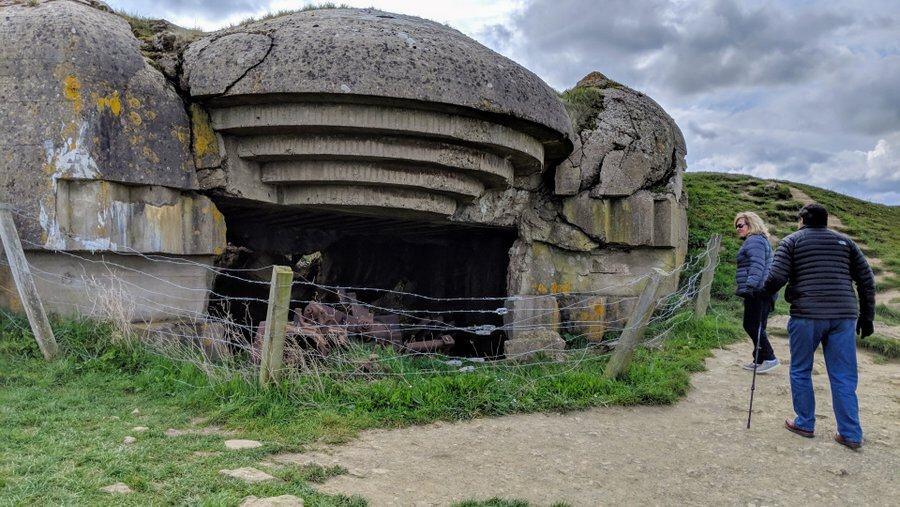
Casement No 4 (the easternmost, next to the car park) looks like it is where all the action took place – it has been completely blown apart! However, all is not as straightforward as it appears.
After HMS Bulolo moved out of range, HMS Ajax started to engage the battery from 11 km away. Her shooting was extremely accurate and one 6″ shell went straight in through the embrasure of Casement No 4. The historian Stephen Ambrose concludes¹ from a site inspection that it must have arrived just as the gun breech was open and so too the armoured door to the ammunition store, causing the entire casement to be obliterated. The gun and crew were certainly put out of action by this ‘lucky shot’, but it was not what caused the devastation. That happened a month later.
As soon as the Allies had established a firm beach head in Normandy, they began setting up advance airfields for their fighters, ground attack aircraft and artillery spotters. One such airfield, B-11, was set up by the RAF on the flat land next to the Longues Battery. They put a pair of 40mm anti-aircraft guns on the roof of the nearest casement, No. 4, and used the ammunition store in the bunker… as an ammunition store.
On the night of 6th July somebody was allegedly careless with a cigarette. When a fire broke out in the bunker, Captain Mitchell, who was in command of the AA guns, managed to clear some of the AA ammunition (while rounds were going off around him) but then there was a colossal explosion and the whole bunker was ripped apart, killing four servicemen.
Visiting the Longues-sur-Mer Battery
Most of the battlefield sites in Normandy, unlike museums or cemeteries, are open all the time. At Longues-sur-Mer you can wander around yourself or hire a guide from the local tourist office which has an office on site. Unless you go early in the morning, out of season, don’t expect to have the place to yourself. There’s a coach park, and during the summer months the site is often busy with school groups and tour groups.
Casement 4 is fenced off, but Casements 1-3 are open and you can explore them. You can also explore the Command/Fire Control bunker on the cliff edge which has been made accessible. The lower slit is where targets were selected and designated. The upper slit housed the bearing & rangefinder.
Nearby, on the path to the Command bunker, you can see the remains of the searchlight emplacement, and a mortar pit. There’s some alleged 1942 German graffiti on the mortar pit – a rampant horse – which you can make your own mind up about. Personally I don’t believe it is genuine, not least because construction didn’t begin till 1943!
My photography let me down on the day, but there’s some good drone footage here shot by Phil Wood in 2016 showing clearly, how the site is laid out.
* Defensive positions along the Atlantik Wall were given Wn code numbers by the Germans. A Widerstandsnest (Wn) was literally a “Resistance nest” or strongpoint.
** The Todt Organisation had a series of Regelbau (Standard Designs) for bunkers, which they simply constructed as & where the German military demanded. The four gun casements at Longues-sur-Mer were M272s, and the Command/Fire Control bunker on the cliff edge is a M262A.
*** A 122mm K390 which I can’t find the open emplacement for. A job for the next time I visit!
**** Because the back-up system to pass on target data used flags, which were difficult to see through the smoke & dust.
¹ p528, D-Day by Stephen E. Ambrose, ISBN 0-7434-4974-6
D-Day Normandy Posts
Declaration: I was on a self-driving press trip as a guest of the Normandie and Calvados tourist offices, who provided a local guide to the Longues-sur-Mer battery.

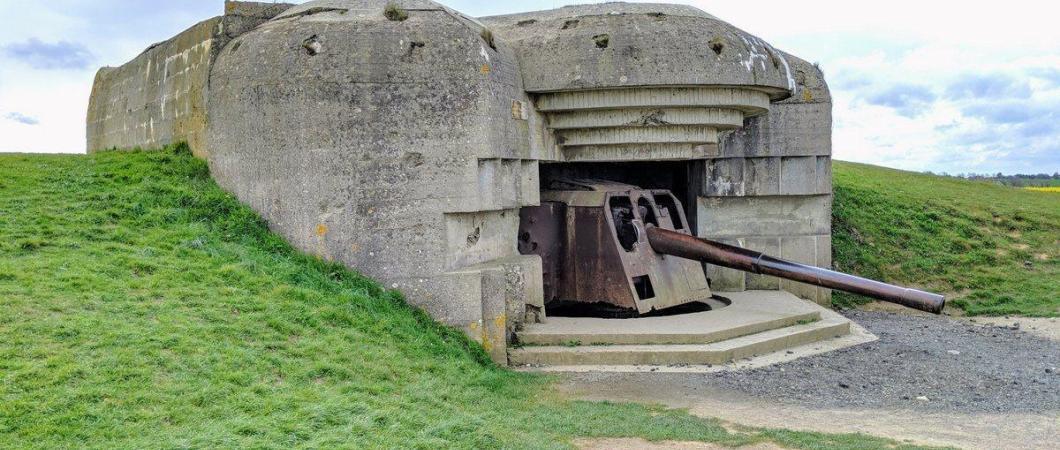

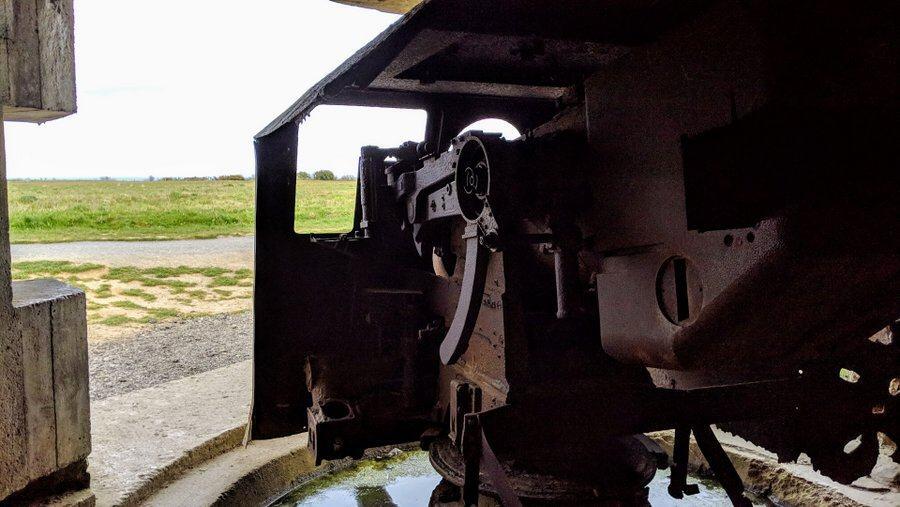
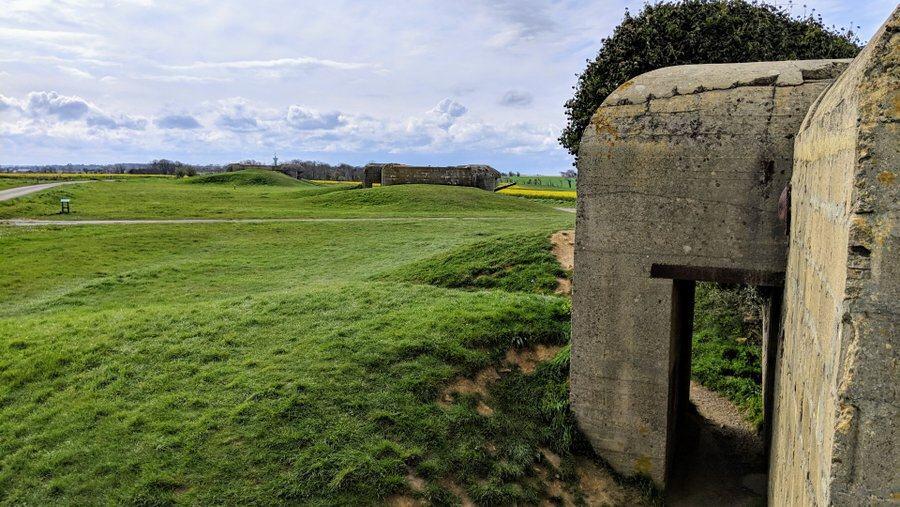
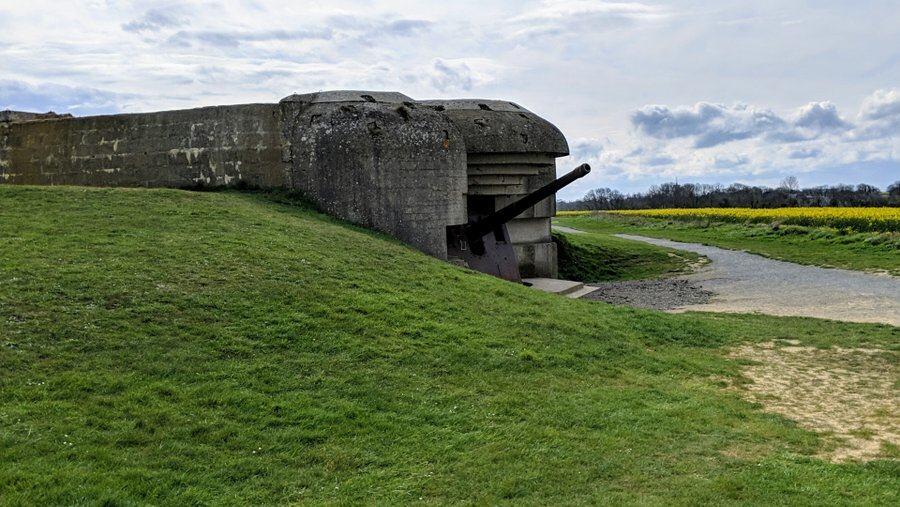
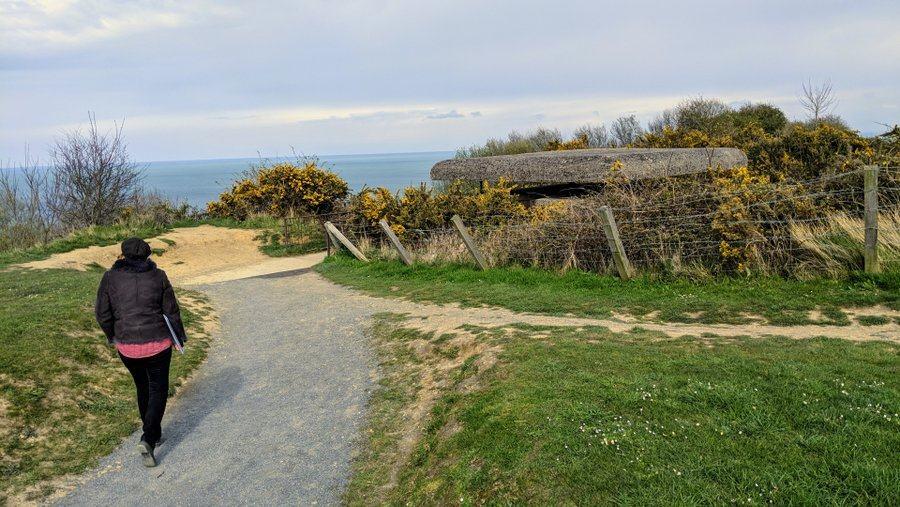

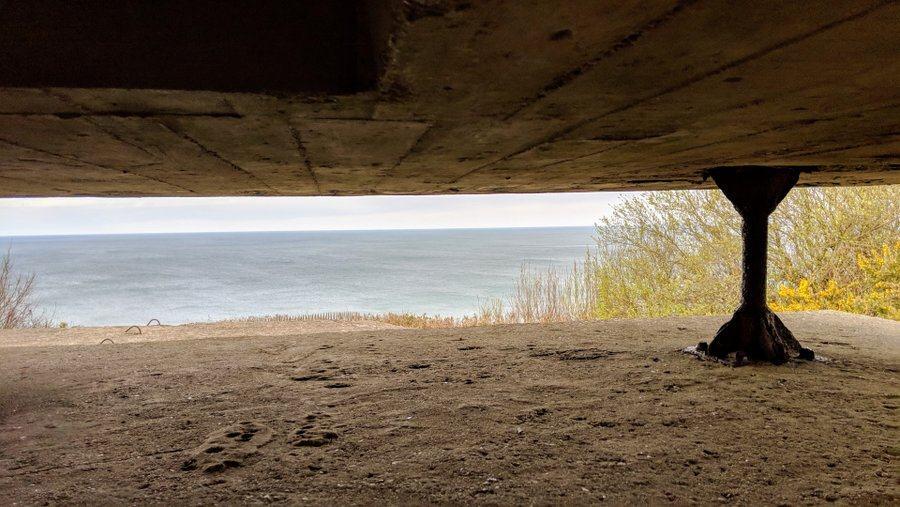
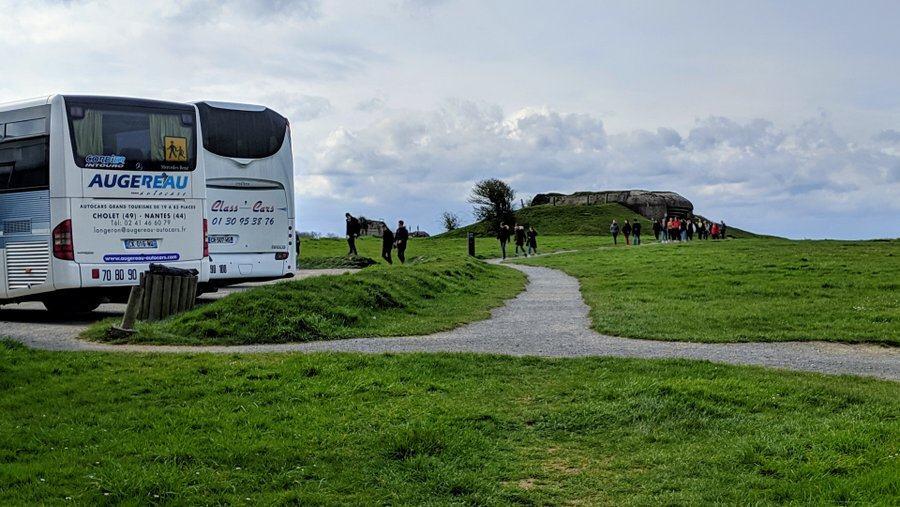
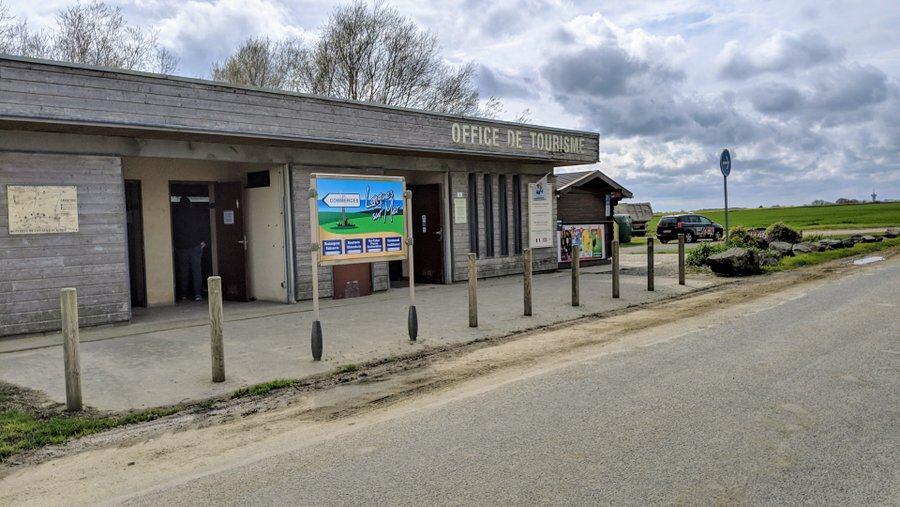
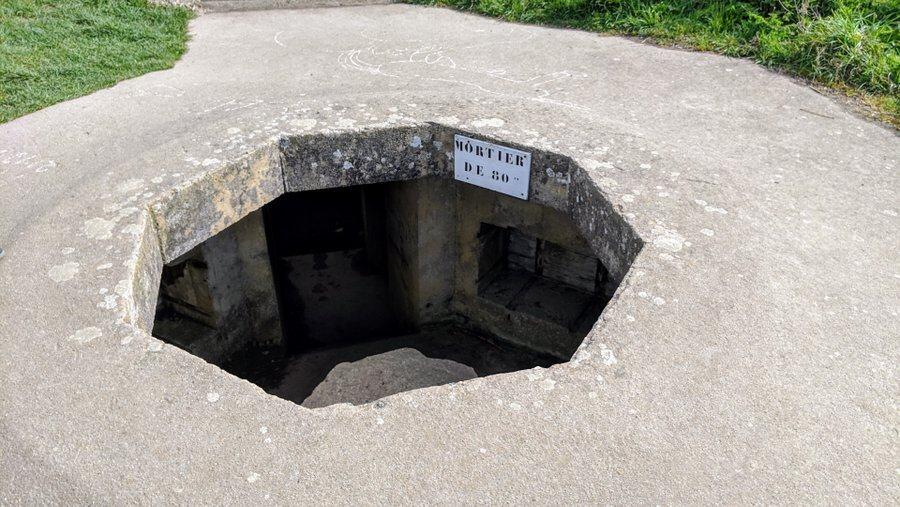
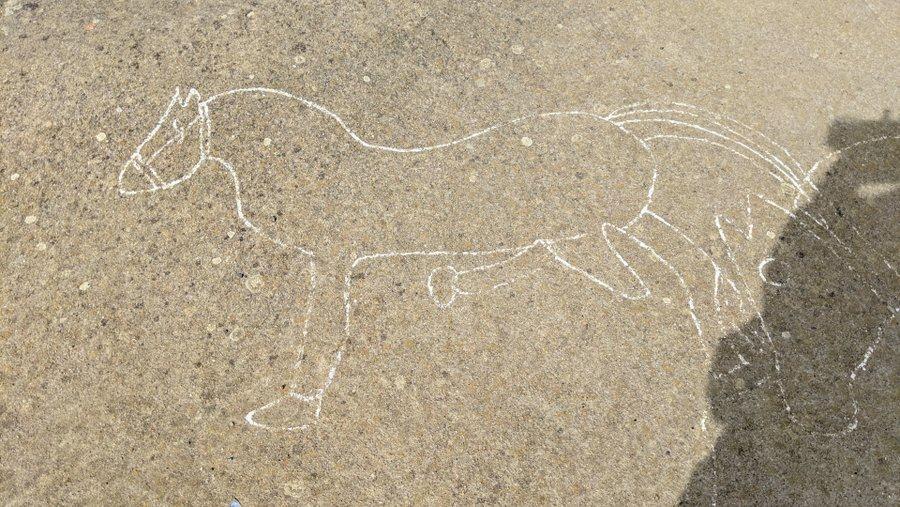


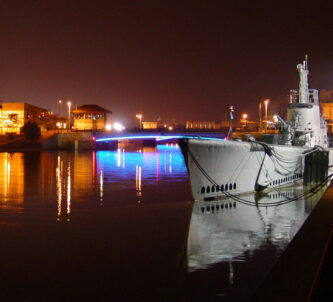
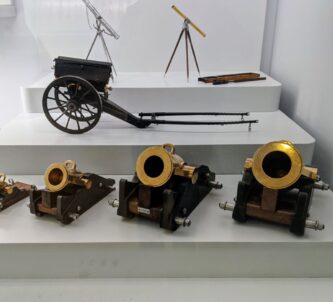
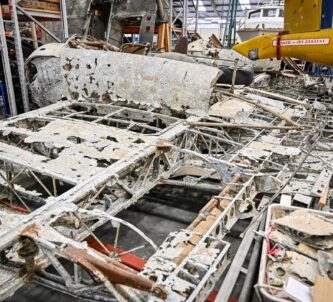
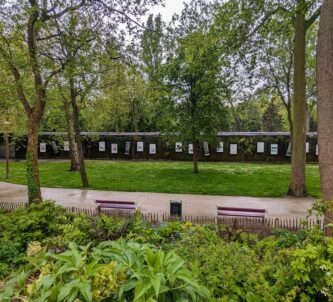

Imagine that you are a platoon, of 19 and 20 year old untested soldiers, in a landing craft trying to make it to the beach while under fire from these guns and their supporting machine gun emplacements. The survivors of the trip to the beach then were faced with the mission to take out those guns. They were scared, courageous, and determined to stop those guns.
… not to mention, shaking with cold, utterly exhausted, and physically drained from spending hours throwing up at sea. It’s amazing any of them had the strength to make it up the beach!
Great article! I visited this site 3 times this year with groups I was hosting. It’s everything you said. Is the command/fire control bunker 300m away on the cliff edge accessible?
Thanks Dwayne 🙂
Yes it is accessible, but what kind of accessible do you mean? IE wheelchair accessible? No, not really. Maybe the upper deck… but the lower bunker has steps, sills and uneven floors.
Here it is in 2008 when Undead Hippies photographed it (CC-BY-SA 3.0 via Wikimedia)
Command Bunker at Longues-sur-Mer in 2008
and now…
Bridge & stairs to Longues-sur-Mer Command Bunker in 2019
So what I mean is, I think the bridge to the upper level is wide enough for wheelchair access, but the ground level access starts with stairs.